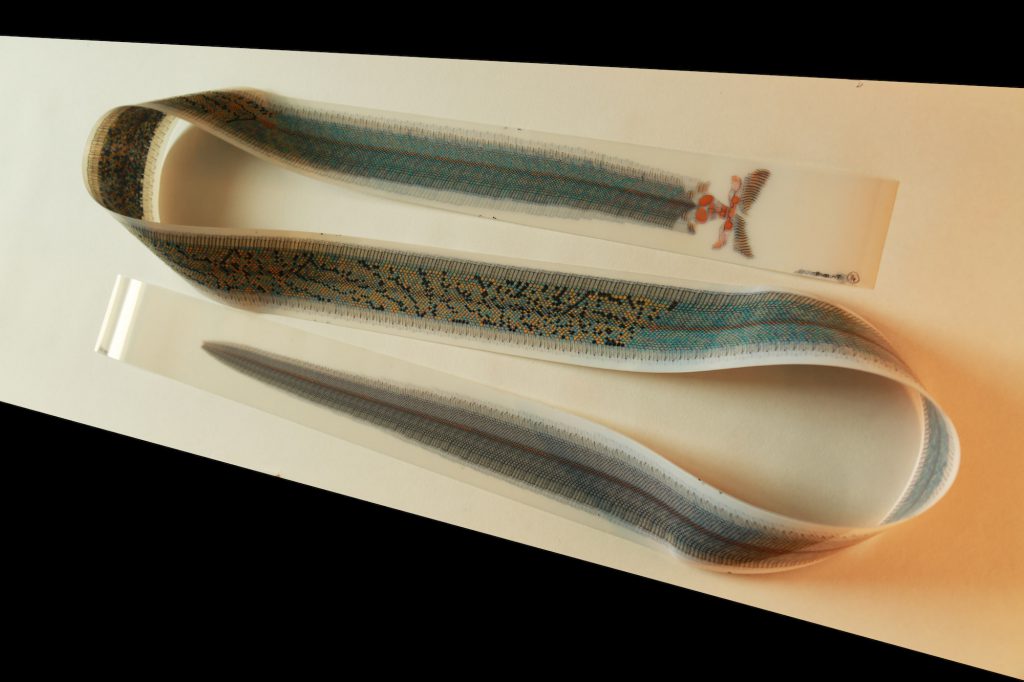
Tuguldur Yondonjamts, 81 Meters Backwards to the Darkest Dark, 2020, drawing on mylar, turquoise, malachite, magnetite, jarosite, Gobi sand pigments, 9 x 300 cm
Tuguldur Yondonjamts, 81 Meters Backwards to the Darkest Dark, 2020, drawing on mylar, turquoise, malachite, magnetite, jarosite, Gobi sand pigments, 9 x 300 cm

“I tried multiple times to alter the speed of sounds made by birds and insects and to find any Mongolian words or dialects in it,” writes Tuguldur Yondonjamts to explain his interest in living beings’ sonic and linguistic dimension. Trained in traditional thangka painting and later a student of Lothar Baumgarten, his relation to Mongolia’s land and traditional culture is mediated by an array of symbolic connections to a world where there is no distinction between nature and poetry. The desire to decrypt the visual information contained in petroglyphs, rocks, and fossils also prompted him to travel through the Altai mountains while revisiting the work of the eighteenth-century mathematician D. Ishbaljir, who gave large numerals poetic names like “Great limited event,” “Beautiful light,” and “The Great Eye.”
Yondonjamts’s intricate installations connect to an experience of the territory of transhumance and shamanic journeys across temporal and spiritual planes. They are composed of objects and drawings mapping a liquid landscape of mountains, falcon feathers, dinosaur skeletons, and coordinates charting the moves of a chess game with natural pigments like jarosite and dragonblood (Antipode Drawing #2, 2013). Like an ancient codex guarding a sacred text, 81 Meters Backwards to the Darkest Dark (2018/2020) is an eighty-one-meter-long skin of a snake transcribing the entirety of the epic poem Khan Kharangui, the saga of a heroic journey over a distance of ninety-nine years ciphered by the artist using the binary adaptation of an old Mongolian alphabet. A wearable suit, Antipode Suit #6 (2019), and a resin figurine, Fluid Guardian of a 200 years old Siberian Pine (2019), expand on the animist connotations of language and script, with allegorical references to biomorphic elements that compose traditional Mongolian writing: “crown,” “hair,” “teeth,” “back,” “belly,” “leg,” and “tail.” Channeling traditional knowledge into contemporary conditions of neoliberal reform, the privatization of land, and the uncontrolled exploitation of natural resources, each of these objects works like a portal, restoring a sense of continuity with ancestral genealogies, mythological histories, and shamanic practices that remained suppressed in Mongolia until the 1990s after seven decades of Communist rule.
Tuguldur Yondonjamts, 81 Meters Backwards to the Darkest Dark, 2020, drawing on mylar, turquoise, malachite, magnetite, jarosite, Gobi sand pigments, 9 x 300 cm